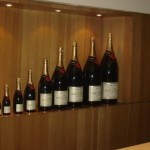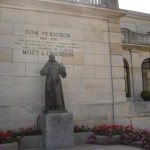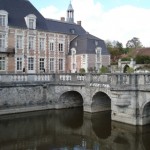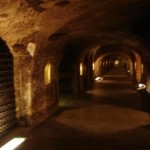Champagne

Overview
Famous for sparkling wines. Splurge on vintage from a great maker for a special occasion when you can. Otherwise, it is a case of finding a champagne house that blends a non vintage champagne that suits your palate and wallet. Also lookout for grower champagnes, which are on the up.
Location
Champagne is located 160km east of Paris and contains the northern most vineyards in France. Probably the most famous of France’s wine regions, the main vineyards are located around the towns of Epernay and Reims on hillsides to gain maximum sun exposure. The chalky terrain provides good drainage, as well as retaining heat to aid in ripening the grapes.
Due to the soaring demand for champagne, the INAO is currently increasing the appellation, with planting of the new vineyards not expected to commence until 2015 for production from 2021.
Climate
Being so far north means Champagne has the harshest climate of the French wine regions, with an average temperature of 10.5 degrees creating difficult conditions for grapes to ripen. However the chalky soil and nearby forests help to stabilise the climate. The result of these cool conditions are wines with a high level of acidity perfectly suited to sparkling wine.
Major Varieties
Famous for sparkling wine made from Chardonnay, Pinot Noir and Pinot Meunier. Some still wine is also produced in the region, although in very small volumes.
Appellations
Champagne is currently the only AOC that does not need to use the abbreviation ‘AOC’ on the label. The Comite Interprofessionel du Vin de Champagne (CIVC) defines the rules under which wine labelled champagne must abide by. These rules are approved by the INAO and include pruning, vineyard yields and production methods. For example, the CIVC regulate how much of the juice is the cuvee (first pressing) as opposed to the taille as it is thought that the taille gives the wines a rougher character. Some producers include cuvee on their label to indicate that the wine is purely from the first pressing.
The Champagne appellation differs from most other AOCs, in that much of the production is by champagne houses who do not own vineyards but buy grapes from the roughly 14,000 growers who only sell grapes. Due to the varied terroir in the region and also the three varietals used, the houses are able to create their distinct styles. Grower champagne, where the grower also produces the champagne is becoming more sought after, with around 5,000 growers who make their own wine. The type of producer is identified by an abbreviation shown on the bottle, for example NM (Negociant manipulant, the major champagne houses) or RM (Recoltant manipulant for grower champagne).
In 1919, the Echelle des Crus system was established as a method for setting prices for grapes. Vineyards were given a rating of between 80 and 100, based on the village in which they were located. Vineyards rated between 90 and 99 were called Premier Cru and vineyards with 100 were called Grand Cru. The rating is now irrelevant, as a free market pricing system is in place, however some champagnes still use the terms ‘Grand Cru’ or ‘Premier Cru’ on their labels.
Two small AOCs are also in the region, Coteaux Champenois, making still wines, and Rose des Riceys for Rose.
Champagne Styles
Non-Vintage: Accounting for most of the annual production, non-vintage is a blend of multiple years. The aim is to make a wine that is consistent from year to year.
Vintage: Produced only in the good years, vintage champagne is made up of at least 85% of grapes from that vintage.
Prestige Cuvee: Generally a blend of the best grapes from the best vineyards, considered by the champagne house to be their best product and priced accordingly. Two famous examples are Cristal from Louis Roederer and Moet’s Dom Perignon.
Rose: Pink coloured champagne, usually coloured with the addition of a small amount of still Pinot Noir, but also sometimes by contact with skins. The second method is more difficult, therefore less common.
Blanc de Noirs: Meaning ‘white of blacks’, champagne made solely from the juice of black grapes, Pinot Noir and Pinot Meunier.
Blanc de Blancs: Meaning ‘white of whites’, champagne made only from Chardonnay.
Brut: a dry style of champagne. The common terms referring to sweetness, from driest to sweetest, are Extra Brut, Brut, Dry, Demi-Sec and Sec.






